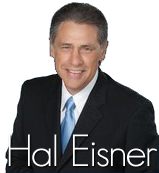TURNING THE TABLES IN A JOB INTERVIEW
March 26, 2011
By Paul Skolnick
There’s a key moment in every job interview that gives you the chance to take control of the interview rather than just react to the soft, squashy, and canned questions interviewers have a tendency to favor. That moment comes right at the beginning, when they come to get you in the lobby and escort you to the conference room or office where the interview will take place.
Miss that chance, and you can say goodbye to your best chance to explain why you’re perfect for the opening. Seize that chance, and you increase exponentially your chances of landing the job.
You’re probably scratching your head at my description of the process, but stay with me here and you’ll get some insight.
A job interview is, for the employer looking to fill an opening, one of the final steps, a chemistry test of sorts for a handful of the top applicants. To do well in the interview, you have to show that you’re the applicant that can mix right in.
Most job applicants, especially young ones, are dumbstruck when they walk into a TV station for an interview. They figure their Sunday-best clothing will open the door for them. They wait for the stock questions – like “What do you hope to be doing 10 years from now?” – and hope they get the answer right.
But there really isn’t a right or wrong at that point in the interview. There are only a series of impressions left with the interviewer about how an applicant might fit into the existing newsroom environment. They’re guesses, some accurate and some not, about what an applicant could do for the company if hired.
Those impressions start forming the minute the applicant meets the interviewer, and they’re reinforced over the course of the interview. Among the impressions taking shape for that first moment:
- How much of a self-starter the applicant is
- How much of a team-player the applicant is
- How confident the applicant is
So let’s return to that pivotal moment in the lobby. The interviewer, who is presumably the person who will be making the hiring decision, approaches the applicant. There’s a handshake, some eye contact, a greeting, and then a walk down the hall. It’s somewhere between one and three minutes until the applicant and interviewer are seated and the job conversation actually begins.
It can seem like forever.
It’s also the applicant’s best chance to start the sales process, because a job interview really is the applicant’s best chance to sell him- or herself for the position. The handshake should be firm, but not vise-like; the eye contact direct and pleasant, but not overly piercing; the greeting cordial but not too personal.
And then there’s the walk. How can you possibly be expected to take control of the walk, since you’ve probably never been in the building and have no idea where you’re headed. The answer is, you take control of the conversation while the interviewer leads the way.
And what to talk about? The one thing all news executives like to talk about – their news product!
In short, you bring up something you saw that day on that TV station, heard on that radio station, or read on that website. It should be something you can praise (rather than criticize), since almost everyone would rather talk about pluses rather than minuses. The praise should be real. Talk about how much you liked out-of-focus video or a misspelled headline, and the interviewer will conclude you don’t know what you’re talking about. But the praise shouldn’t be overly effusive. A bit of nice writing, some good video, a story the competition didn’t have – any one of them is good.
And why does this silly little strategy work? Think about what forms the interviewer’s impression:
- Self-starter: you took the time and initiative to review the product without being told
- Team-player: you’re already acting like a member of the team by being aware of what the team is doing
- Confident: you’re confident enough to volunteer your opinion
The longer you can keep the conversation on the news product, the fewer of the dumb questions you’ll have to answer and the better the interviewer’s opinion of you.
And that is what’s known as acing the interview!


Leave a Comment
Allowed tags: <a href="" title=""> <abbr title=""> <acronym title=""> <b> <blockquote cite=""> <cite> <code> <del datetime=""> <em> <i> <q cite=""> <s> <strike> <strong>